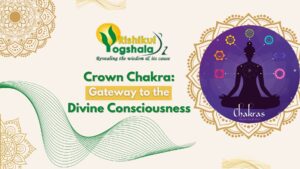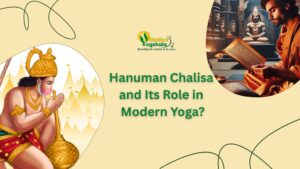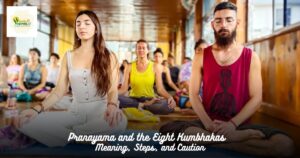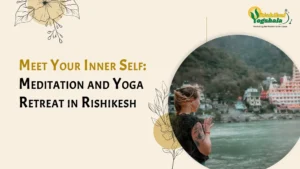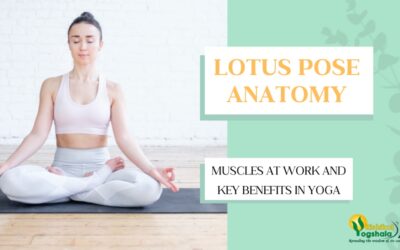Half Lord of the Fishes Pose
In today’s age and day, it’s a fast-paced world where every moment is filled with hustle and bustle, and finding calm can be a problematic practice. However, don’t worry—among the chaos of modern life, there is always yoga to calm you down! Among the various poses in yoga, Ardha Matsyendrasana is one that shines out. The pose is also known as the Half Lord of the Fishes Pose. In this blog, we will explore the wonders of the pose and how just 20 minutes of practice can benefit the body, mind, and spirit.
What is Ardha Matsyendrasana?
Named after the yogi Matsyendra, Ardha Matsyendrasana is a time-honoured gift from ancient sages packed with therapeutic goodness. Regular practice eases back discomfort, boosts digestion, and gives you an extremely flexible spine. So, what are you waiting for? Let’s roll out your mat and embrace the healing power of Ardha Matsyendrasana together!
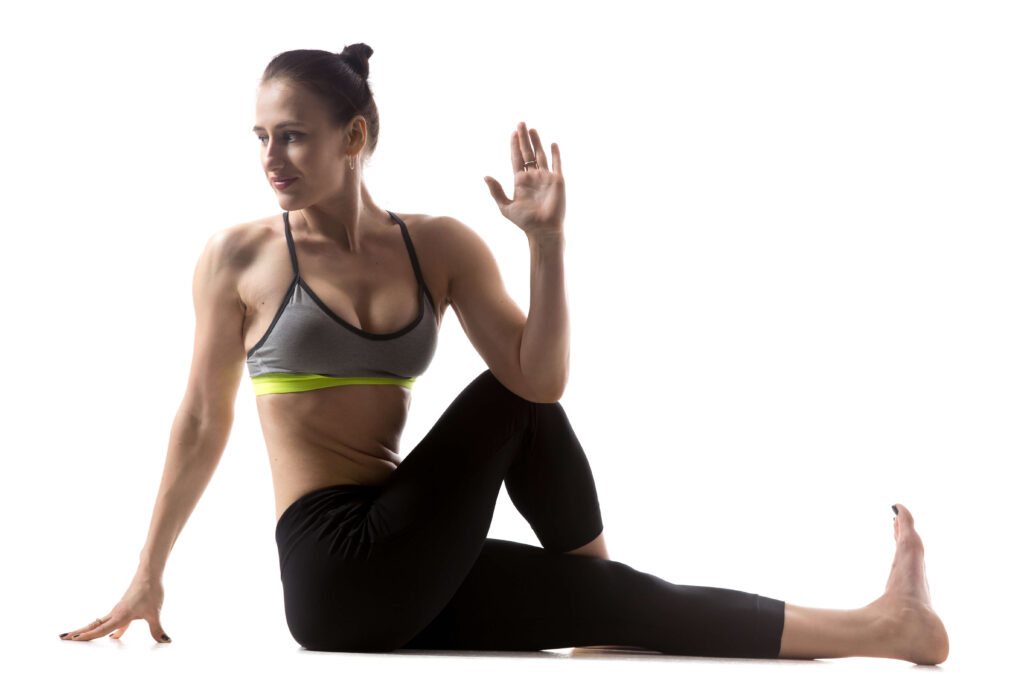
How To Prepare Yourself For Ardha Matsyendrasana Pose?
- Find a cosy corner, free from the hustle and bustle of daily life.
- Roll out your yoga mat and gather any props that you fancy—a bolster, a block, or even a fluffy pillow
- Wear your comfortable yoga attire, allowing your body to move without restrictions.
- One can also light a candle or play soothing tunes to elevate the mood.
- With everything set, one can practise the Ardha Matsyendrasana procedure and unlock its transformative magic!
The 20-Minute Ardha Matsyendrasana Routine
Ardha Matsyendrasana is a seated twisting yoga posture that offers numerous benefits for the body and mind. Using it in a 20-minute routine can provide a quick yet effective way to improve flexibility, strengthen muscles, and promote relaxation! Below is a 20-minute routine!
- First, begin comfortably on your mat, with your spine erect and your shoulders relaxed. Inhale positivity and remove tension
- Extend your legs out in front of you, then bend your right knee and place the sole of your right foot on the outside of your left thigh.
- Raise your arm overhead, and then turn to your right and place your left elbow outside of your right knee.
- Hold this twist for five breaths
- Repeat the same thing on the opposite side
- After completing both sides, come back to a seated position and extend both legs forward.
- Bend your knees, hold onto your knees, and gently rock side to side to massage the lower back
- Close the practice with a few minutes of mindful breathing, focusing on the inhale and the exhale.
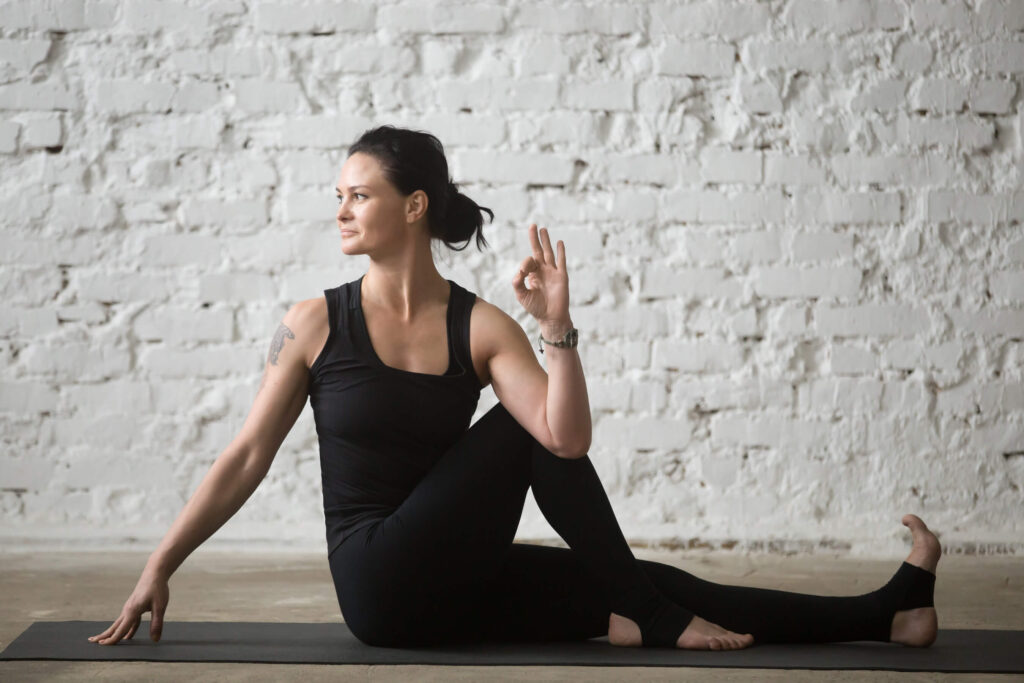
Ardha Matsyendrasana Benefits for Body and Mind
1. Improves Spinal Flexibility
Ardhya Matsyendrasana is an excellent pose for enhancing spinal flexibility. This pose helps to compress the spine’s muscles and nerves. This very pose improves overall spinal health and removes common back problems such as discomfort in the lumbar region.
2. Enhances Digestion
This very pose helps to enhance digestion by promoting movement and improving the overall functioning of the digestive system. Those who suffer from digestive issues such as bloating and constipation may find relief through the regular practice of this pose.
3. Detoxifies The Body
This pose helps detoxify the body through its twisting action. As the practitioner twists, the pose stimulates the organs of detoxification, such as the liver and kidneys. Encouraging them to flush out toxins and waste products. This contributes to overall health and well-being.
4. Strengthens Core and Back Muscles
This is an excellent yoga pose for strengthening the core and back muscles. This pose helps improve overall core stability. The pose also targets the upper back muscles, contributing to a more flexible spine.
5. Reduces Stress and Anxiety
Practising the pose can have a very calming effect on the nervous system, helping to reduce stress and anxiety. The deep breathing and twisting involved in the pose can help to quieten the mind and promote relaxation!
6. Enhances Blood Circulation
Ardha Matsyendrasana improves blood circulation by compressing and releasing blood vessels in the torso. The twisting action increases blood flow to the organs and tissues, delivering oxygen and nutrients more efficiently throughout the body.
7. Improves Posture
The pose helps improve posture by strengthening the back and core muscles. This pose encourages proper alignment and reduces the risk of slouching or hunching, thus promoting a better overall posture. This pose also contributes to better breathing, digestion, and overall well-being.
Precautions to Take While Practicing Ardha Matsyendrasana
When practising the pose, it is essential to remember certain precautions to ensure a safe experience:
- Make sure to practice on an empty stomach or at least 3-4 hours after a meal to avoid digestive issues
- Make sure to have a thorough warm-up of the spine before attempting the pose
- Gradually get into the pose, respecting your body’s limitations and also avoiding forced twists.
- If you are new to this pose, then practise it under the guidance of your yoga instructor.
Incorporating Ardha Matsyendrasana into Your Daily Routine
- Whether you practice in the morning to set a positive tone for the day or in the evening to unwind from the day’s stress, consistency is the key
- One can start with just a few minutes each day and gradually increase the duration as the body becomes more accustomed to the pose
- One should remember that it’s not about perfection but progress, so be gentle with yourself and seek your body’s limitations!
As we journey through the twists and turns of the pose, let us not only find solace in the physical practice but also embrace the opportunity for self-reflection and growth. With this sacred practice, we not only nourish our bodies but also nourish the soul.

Ardha Matsyendrasana Variations
Easy Variation
- As a beginner, you can keep one leg extended straight, bend the other leg, and twist it with your fingers pointing up or your elbows bent.
- Bend the legs, but the other foot doesn’t cross the knee, and twist.
Advance Variation
- Make a bind under the thighs and interlock the palms.
Advice for Beginners
- Avoid curving the spine. You will not get all the benefits of the spine curves.
- Don’t focus entirely on twisting the lower back. The twist should be evenly spread between the upper and lower back.
- Be careful when twisting. Twist as much as possible, and always engage your core muscles to hold the asana.
Who Should Avoid Doing Ardha Matsyendrasana?
- Pregnant women should avoid doing the pose, particularly during the second and third trimesters. These women should avoid the pose, as it can press on the foetus and cause discomfort due to the strong abdominal twist!
- Those who have spinal injuries should also avoid the pose
- Practitioners having high blood pressure or those with heart injuries are recommended not to do the pose
- If you are a senior citizen, then you should do the pose under strict supervision.
Conclusion
So, many yoga poses are beneficial to the overall well-being of an individual, and one, as discussed, is Ardha Matsyendrasana.
If you want to enhance your yogic journey, then you can join our yoga school in Rishikesh called Rishikul Yogshala Rishikesh. It offers many comprehensive programs such as 100 Hour Yoga Teacher Training in Rishikesh, 200 Hour Yoga TTC In Rishikesh, 300 Hour Yoga Teacher Training in Rishikesh, and 500 Hour Yoga Teacher Training in Rishikesh.
Come become a part of our yogic journey and become masters of yoga.
Some Frequently Asked Questions About Ardha Matsyendrasana
Yes, there are many benefits of ardha matsyendrasana, and below, we will lay down some questions asked about the pose:
1. What is the other name of Ardha Matsyendrasana?
This pose is commonly known as the Half Lord of the Fishes Pose and is a yogic posture that goes beyond physical flexibility.
2. For How Long Should One Hold This Pose?
In this pose, one should raise their left arm over the head. Stretch it around your right knee and grasp your right ankle. One should maintain this pose for around 30 seconds!
3. What disease is Cured by this pose?
This pose is very beneficial for people with type 2 diabetes. It is a very good pose, and has other benefits as well!
4. Is Ardha Matsyendrasana good for weight loss?
Yes! This pose is very good for weight management. One should combine it with a healthy lifestyle and see the results in improving digestion and engaging core muscles!
5. What are some benefits of the pose?
This very pose reduces stress and anxiety, makes one relaxed, improves concentration, and also brings about mental clarity!


